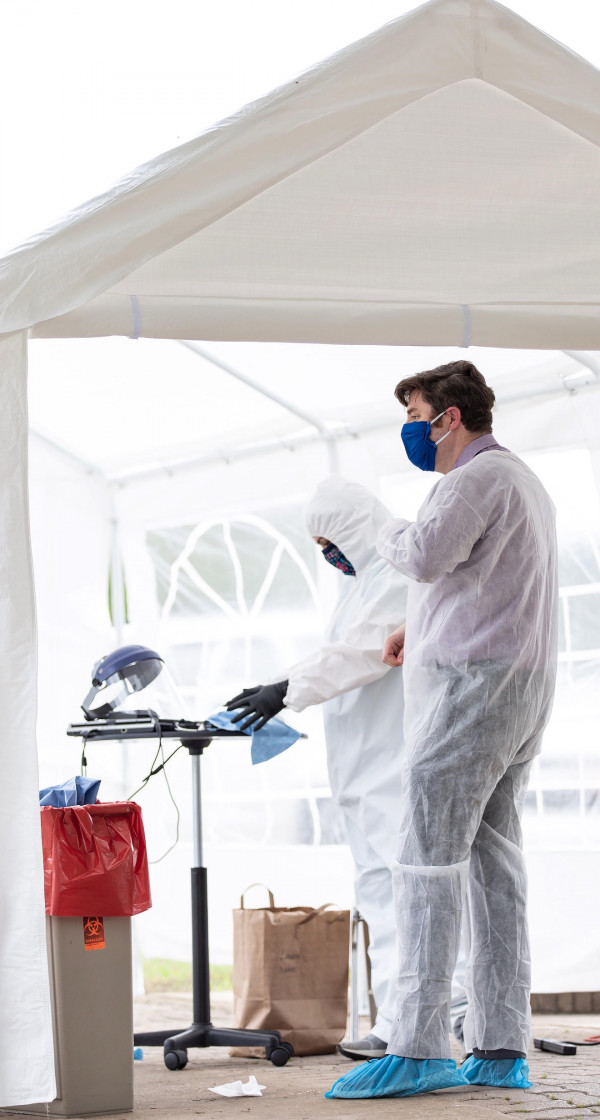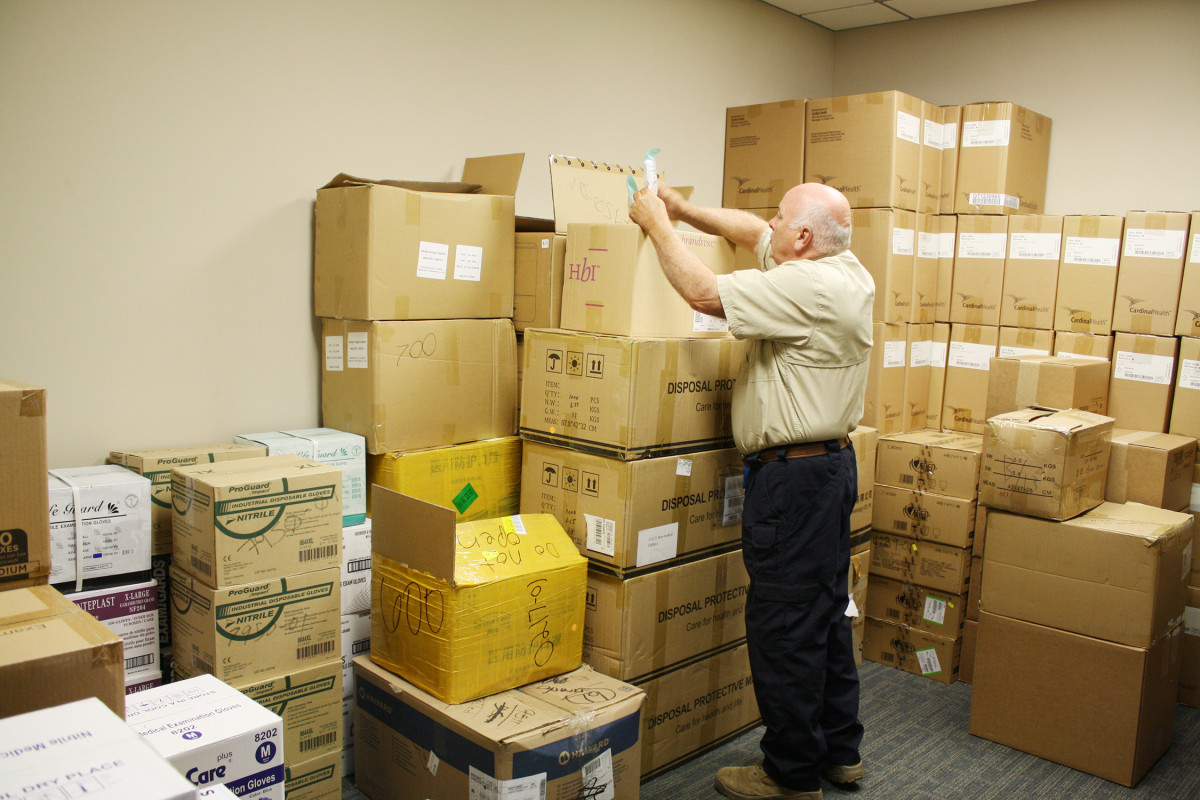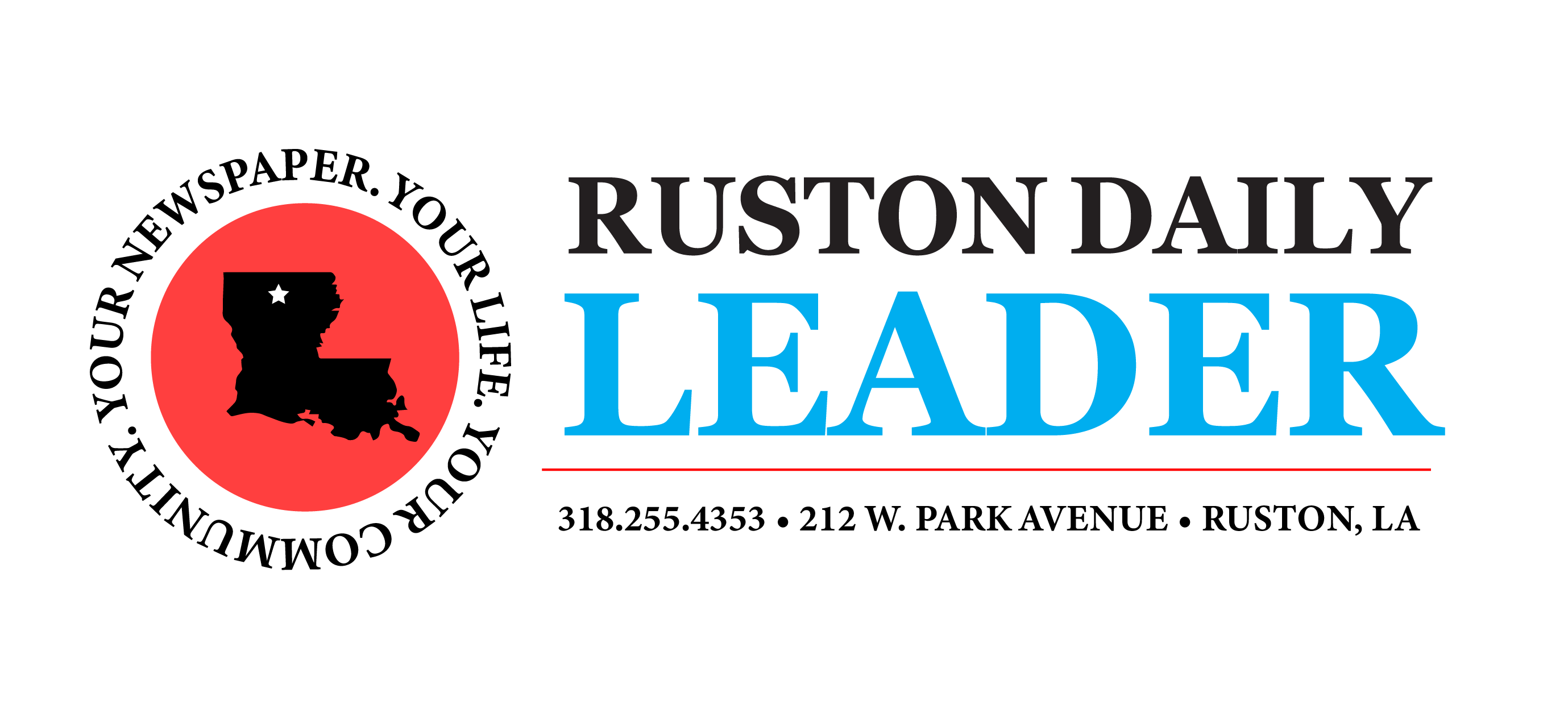One year later

File photo
Soon after the COVID-19 pandemic began, Green Clinic implemented curbside services for safety, including a tent to dispose of PPE and sterilization of permanent equipment. Above is a file photo of Dr. Johnathan Baines in that tent.
Editor’s Note: This is the first of a three-part series focusing on the one-year mark of the COVID pandemic in Lincoln Parish.
For the past year, Lincoln Parish has been stuck with the rest of the world in the middle of the novel coronavirus pandemic.
“It shut down schools. It changed graduations. It changed our attendance at church, going to restaurants. It changed life as we know it forever,” Kip Franklin, Lincoln Parish Director of Homeland Security and Emergency Preparedness, said.
New cases of the potentially deadly respiratory virus are plateauing, as are COVID hospitalizations and related deaths, but it’s been a bumpy ride.
“It may be a little premature, but I’m ready to take a sigh of relief,” long-time Ruston physician Dr. Allen Herbert said.
Though authorities said they believe Lincoln Parish was as well prepared as it could have been to meet the pandemic, they describe the early days as confusing and muddled.
“Everything changed daily. Everything was so fluid, changing so fast,” Ruston Mayor Ronny Walker said.
Initially, gloves, masks, gowns and other personal protective equipment for first responders and medical personnel were hard to find. That got better.
But the presence of COVID-19 in the parish did not.
Monday is the one-year anniversary of the first two confirmed cases of COVID-19 in Lincoln Parish. One of the patients was in their late 50s, the other, in their mid 40s. Both survived.
As of Friday, the Louisiana Department of Health reported 3,274 confirmed cases of COVID-19 in Lincoln Parish since March 22, 2020.
That number includes 84 people who died from the virus and seven more whose deaths, LDH said, were likely COVID-related.
“We had our first two cases, and that’s where it went from there,” Franklin said.
Here’s a look back at COVID-19, one year later.
‘Everybody was ramping up’

Above is a file photo from May of 2020 showing Kip Franklin inspecting a shipment of personal protective equipment.
Franklin began “picking up” on COVID-19 in early March.
Lincoln Parish was about to mark the first anniversary of an EF3 tornado that killed a Ruston woman and her teenage son in the early morning of April 25, 2019. And now, a pandemic loomed.
On March 9, the first presumptive case of COVID-19 was reported in Louisiana. The next day, the Lincoln Parish Health Task Force announced it would meet regularly to talk about the virus and ensure the parish was ready to mitigate it.
Washing your hands and staying 6 feet apart became the directives of the day.
“We were ready as much as anybody else was,” Franklin said. “Everybody’s plans, they were trying to come up with, every plan was changing on a daily basis. We’d never dealt with a pandemic. Everybody was ramping up.”
Franklin’s first PPE order was for N-95 masks. Supplies would trickle in. Demand was high nationwide, but COVID had shut down some of the manufacturers.
“I might request 3,000 gowns, but I might get 300 — if I got any at all,” Franklin said.
He rationed PPE so “everybody could get a little bit.” Local seamstresses began making cloth masks for Franklin to give away, even before Gov. John Bel Edwards ordered a statewide mask mandate. The mask mandate wouldn’t come until July.
For the first four months of the pandemic, LDH shared names and addresses of people who had tested positive for COVID-19.
The theory was that first responders would know to take precautions if they were summoned to those addresses. “This office has become PPE central — literally,” he said.
Franklin’s also helping Northern Louisiana Medical Center get people on the list for COVID vaccinations.
“I know people are ready for (COVID) to be over,” Franklin said. “I’m tired of it, too. I think we’ll all pull out of this together.”
School shutdown left teachers, students hanging

This file photo from April 2020 shows Ruston High School Principal Dan Gressett and other employees passing out paper packets to a car line of families for at-home learning.
Ruston High School English teacher Emily Howell is still grieving over what happened on the Friday before her junior students were to take the ACT, a standardized test used for college admission.
“We had done so much work getting them ready for the ACT. It was supposed to be on the next Tuesday,” Howell said.
But it didn’t happen. On March 13, 2020, Louisiana Gov. John Bel Edwards ordered all public schools closed for a month.
Howell and a student were reading an essay on her laptop when a news trailer came across her screen.
“Between fifth and sixth hour, I will never forget the just chaos in the hallway. Everybody was just like ‘what’s happening?” Howell said. “I was kind of traumatized by that day.”
The statewide school shutdown lasted for the rest of the 2020 academic year.
“We honestly thought we’d be out two weeks, three weeks,” Howell said. “I cannot describe to you the grief I felt as it became apparent we weren’t coming back.”
Though talk of closing schools had been buzzing among area districts, nobody really anticipated it, former parish school Superintendent Mike Milstead, the school chief at the time, said.
When the shutdown order came, school system administrators weren’t sure how to offer lessons, or how rapidly the virus might spread among teachers and staff.
Conversations began locally about holding virtual classes, but “we knew we were not ready for that,” Milstead said.
Neither were students. Some didn’t have computers; others didn’t have reliable internet service, if they had internet at all.
Some teachers tried making paper packets, but that wasn’t ideal, Milstead said.
The takeaway? “We’re not totally ready for catastrophes like this to happen,” said Milstead, who retired Dec. 31.
Howell laments that the school year came to an abrupt end with no closure — for students or teachers.
Void of guidance from the state, teachers had to pivot as things changed.
“We were just kind of making it up as we went along,” she said about early attempts at posting online lessons.
Over the summer, a group of teachers got together to write distance learning guidelines and try to coordinate programs for the current year. It’s been hard, Howell said.
Some students have been virtual all year, others have come to in-person class, and there’s been what Howell described as a “revolving door” of students in and out of COVID quarantine.
Milstead predicts students may be a year behind in learning.
“There is no substitute for a teacher being a live body before live-body students,” he said.
But the pandemic has produced some pluses: Teachers have become more technologically savvy and have learned to collaborate more, Howell said.
“This has been a very hard year to be a teacher,” she said. “Teachers are tired. I feel like if we do this, we’re going to be rock stars.”
Mayor surprised by COVID’s surge

Businesses were low on cleaning supplies and many other items during the early days of the pandemic
The course of COVID-19 took Ruston’s Walker by surprise.
He figured Lincoln Parish might top out at 500 cases, with only minimal disruption.
“I just didn’t see it as being that big,” Walker said. “Then, of course, the hammer fell and that’s when everything was shut down.”
On March 23, Edwards issued a stay-at-home order that would remain in place until May 15. All nonessential businesses closed. COVID-19 had eliminated normalcy.
“That’s when we made the decision to take some really, really tough steps,” Walker said.
The city laid off all of its part-time employees and contract workers, furloughed 21 employees and cut pay for others in light of the anticipated economic slowdown caused by the coronavirus.
“When we looked at it, we felt like sales tax would be down 50%,” Walker said.
At the time, Walker estimated the city would lose as much as $700,000 in sales tax income per month because of limitations placed on restaurants, theaters, large-group gatherings and businesses.
But it didn’t. Despite low collections in March through May, the city ended 2020 with sales tax at a three-year high.
“To this day, I can’t begin to figure out why, but thank goodness I was wrong,” Walker said.
What the city hadn’t counted on was the amount of money residents would spend on groceries, do-it-yourself projects and building supplies during the months people were stuck at home.
Walker remains concerned about the long-term effects of the pandemic, and not just economically. He’s worried about the COVID variants, and that the city’s churches may suffer financially because COVID forced congregants to stay home.

